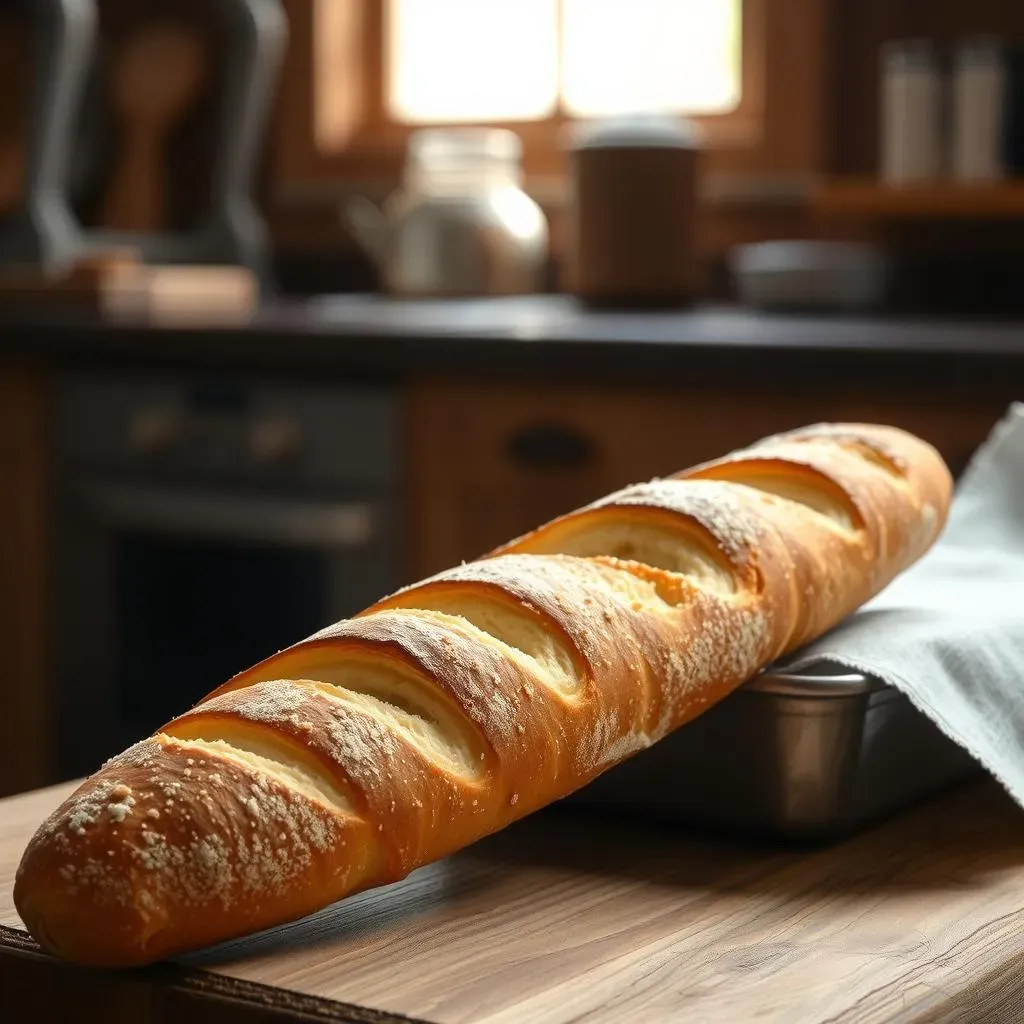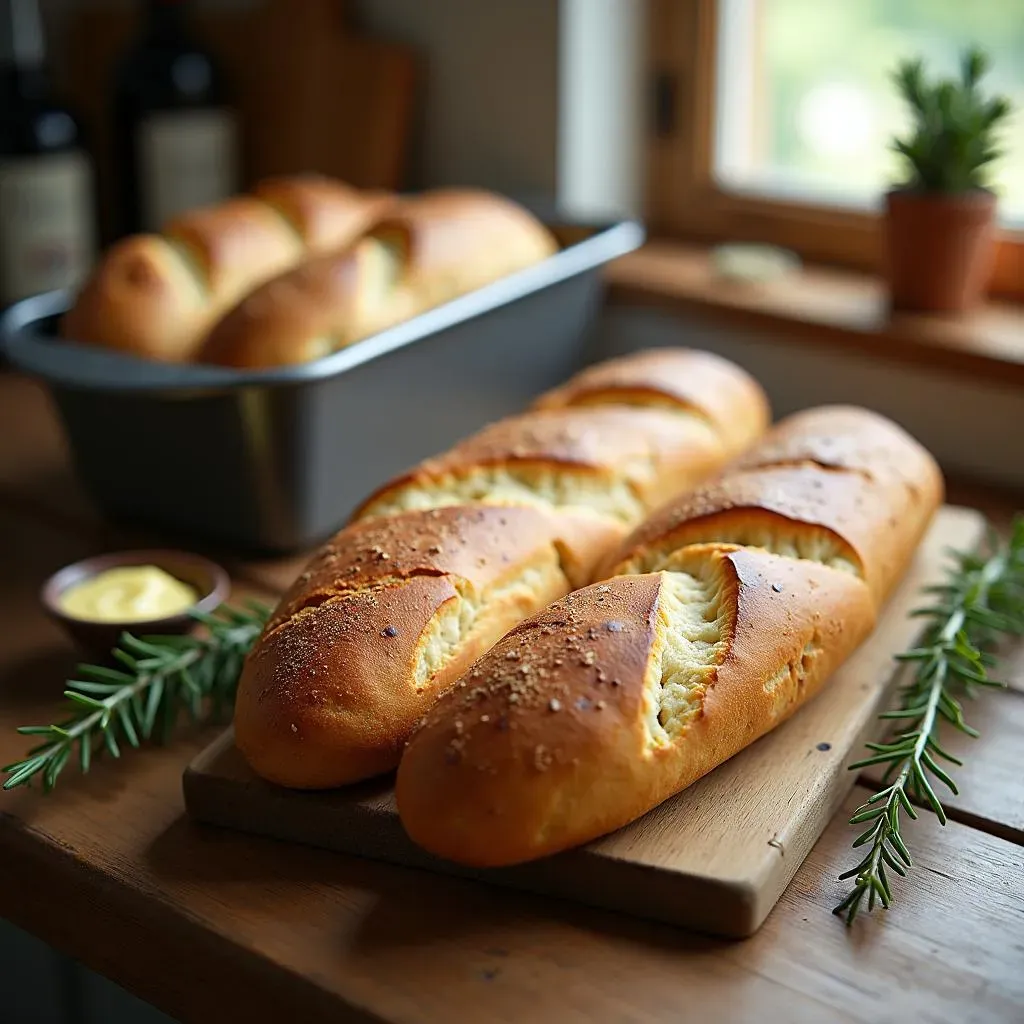Table of Contents
Ever dreamed of crafting those perfect, golden-brown baguettes you see in Parisian bakeries? The secret isn't some mystical French technique, but often lies in the humble baguette french bread pan. This comprehensive guide will take you on a journey from selecting the ideal pan to mastering baking techniques that guarantee crispy crusts and airy interiors. We'll explore various pan types, sizes, and materials, helping you choose the perfect one for your baking style and kitchen setup. Then, get ready to perfect your baguette-making skills with our expert tips and tricks, covering everything from dough preparation to oven temperature control. We'll even tackle those pesky baking problems that can sometimes leave you with less-than-stellar results. By the end of this article, you'll be confidently wielding your baguette french bread pan, ready to impress friends and family with your delicious homemade loaves. So, let's embark on this delicious adventure and unlock the secrets to the perfect baguette!
Choosing the Right Baguette French Bread Pan for Your Needs
Material Matters: Steel, Stone, or Non-Stick?
Picking the right baguette french bread pan material is key. Carbon steel pans, like those used in many professional bakeries, provide excellent heat distribution for a wonderfully crisp crust. However, they require a bit more care—seasoning and proper cleaning are essential. Check out this French baguette bread pan guide for more details. Stoneware pans, on the other hand, are more forgiving, easier to clean, and often come in attractive designs. They might not get *quite* as crispy as steel, but they're a great option for home bakers.
Non-stick pans are convenient and easy to clean, but be aware that some non-stick coatings aren't ideal for very high heat. Always check the manufacturer’s recommendations before baking. If you're a beginner, a non-stick pan might be a good starting point to build your confidence. You'll gain experience before moving to more advanced techniques and materials. For a delicious recipe, try our French baguette bread recipe!
Material | Pros | Cons |
|---|---|---|
Carbon Steel | Excellent heat distribution, crispy crust | Requires seasoning, more care |
Stoneware | Easy to clean, attractive designs | May not get as crispy |
Non-Stick | Easy to clean, convenient | Some coatings not suitable for high heat |
Size and Shape: How Many Baguettes Are You Baking?
Baguette pans come in various sizes, from single-loaf pans to those that accommodate four or more baguettes at once. Consider how many baguettes you typically bake. A smaller pan is perfect for a single loaf, while larger pans are great for baking multiple loaves simultaneously, saving you time and energy. If you're planning on making a large batch for a party, a larger pan is definitely the way to go. The French bread baguette pan is a perfect example of a versatile baking tool.
The shape of the pan is also important. Traditional baguette pans have long, narrow slots to give your baguettes their signature shape. Some pans offer wider slots, which can be useful if you're working with a slightly different recipe or if you prefer a slightly wider, shorter baguette. Think about your personal preferences and desired baguette size when selecting your pan. For more inspiration, check out our French bread baguette post for more tips.
- Consider your baking frequency.
- Think about the number of baguettes you usually bake.
- Choose a size that fits your oven and baking needs.
Baking Techniques for Perfect Baguettes in Your French Bread Pan

Baking Techniques for Perfect Baguettes in Your French Bread Pan
Preparing Your Dough: The Foundation of a Great Baguette
Before even thinking about your baguette french bread pan, you need a fantastic dough. Proper hydration is key; a well-hydrated dough will create that signature airy crumb. Aim for a dough that's slightly sticky but manageable. Over-kneading can lead to tough baguettes, so be gentle! Don't forget the crucial bulk fermentation – this is where the magic happens, allowing your dough to develop flavor and rise beautifully. Check out this authentic French bread baguette recipe for a detailed guide.
Once your dough is ready, gently shape your baguettes. This is where you get to be creative! You can use a simple rolling technique, or a more advanced shaping method, depending on your experience level and preference. Remember to score your baguettes before baking – this is crucial for controlled expansion and that beautiful, rustic look. Scoring is an art, so don't be afraid to practice! For another great recipe, try our French bread baguette recipe.
- Hydration is key: Aim for a slightly sticky dough.
- Gentle kneading is essential: Avoid over-kneading.
- Bulk fermentation is crucial: Allow for proper rise and flavor development.
- Shape carefully: Use a technique that suits your skill level.
- Score before baking: This controls expansion and creates a beautiful crust.
Baking Your Baguettes: Achieving that Perfect Crust
Preheat your oven to a very high temperature—this is crucial for that signature crispy crust. A preheated baguette french bread pan will help ensure even baking. Place your shaped baguettes in the preheated pan, ensuring they're evenly spaced. You might want to add a pan of water to the bottom of your oven to create steam; steam helps create that beautiful, chewy interior. Baking time depends on your oven and the size of your baguettes, but keep a close eye on them!
Once your baguettes are golden brown and sound hollow when tapped, they're ready! Remove them from the pan immediately and let them cool completely on a wire rack before slicing and serving. Resist the urge to slice into them while they're still warm—you'll want to enjoy that perfect crust and airy crumb! For a different take on French bread, try our ultimate French baguette French toast.
Step | Description |
|---|---|
Preheat Oven | Very high temperature (450°F or higher) |
Add Water Pan (Optional) | Creates steam for a chewy interior |
Bake | Until golden brown and sounds hollow |
Cool | Completely on a wire rack before slicing |
Troubleshooting Common Baguette Baking Problems with Your French Bread Pan
Pale Crust: Not Enough Heat?
A pale crust usually means your oven temperature wasn't high enough, or your baguette french bread pan wasn't adequately preheated. Remember, high heat is crucial for that signature crispy crust. Try increasing your oven temperature by 25°F (14°C) next time and preheating your pan for at least 30 minutes. Also, make sure your oven is calibrated correctly; a faulty thermostat can significantly impact baking results. For a detailed guide on oven temperatures, check out this French baguette bread recipe which includes temperature recommendations.
Another possible culprit is insufficient steam. Steam helps create a chewy interior and a crisp crust. If you aren't already using a steam method (like adding a pan of water to your oven), consider incorporating one into your next baking session. Experiment to find the perfect balance of steam and heat for your oven and recipe. Want to explore other French bread varieties? Check out our French bread vs. baguette comparison for more insights.
Problem | Solution |
|---|---|
Pale Crust | Increase oven temperature, preheat pan longer, add steam |
Soggy Interior: Too Much Hydration or Not Enough Baking?
A soggy interior might indicate your dough was too wet, or your baguettes didn't bake long enough. Always follow your recipe carefully when measuring ingredients, especially liquids. If you're using a new recipe, consider making a small test batch first to ensure you have the right hydration level. Remember, a slightly sticky dough is preferable to a dry one.
Underbaking is another common cause of a soggy interior. Use an oven thermometer to verify the accuracy of your oven's temperature, and bake your baguettes until they're golden brown and sound hollow when tapped. If you're still having issues, try increasing your baking time by a few minutes. For a delicious recipe with precise instructions, check out our French bread baguette recipe.
- Check dough hydration: Slightly sticky is ideal.
- Verify baking time: Bake until golden brown and hollow-sounding.
- Use an oven thermometer for accuracy.
Uneven Baking: Is Your Pan the Culprit?
Uneven baking can be caused by a few things. First, make sure your baguette french bread pan is clean and free of any residue. Residue can interfere with heat distribution, resulting in uneven baking. Secondly, ensure your baguettes are evenly spaced in the pan; overcrowding can lead to uneven browning. Finally, your oven itself might be the issue. Some ovens have hot spots that can cause uneven baking; try rotating your pan halfway through baking to address this.
If you're still experiencing uneven baking, consider using a different pan, or investing in an oven thermometer. An oven thermometer will help you verify your oven's temperature accuracy and identify any hot spots. For more tips and tricks on baking, check out our baguette French bread guide.
"The key to perfect baguettes is patience and attention to detail. Don't be discouraged by initial setbacks – keep practicing, and you'll soon be baking like a pro!" - Anonymous Baker
